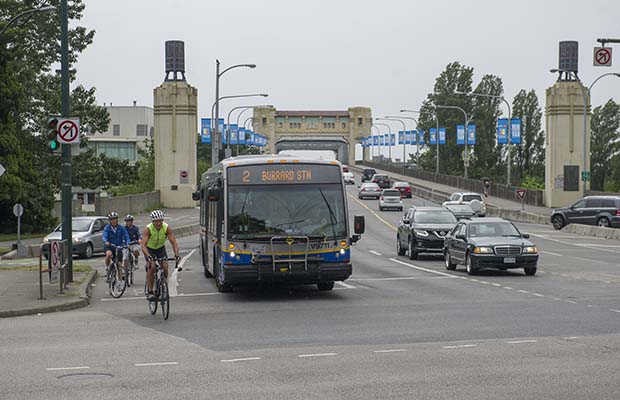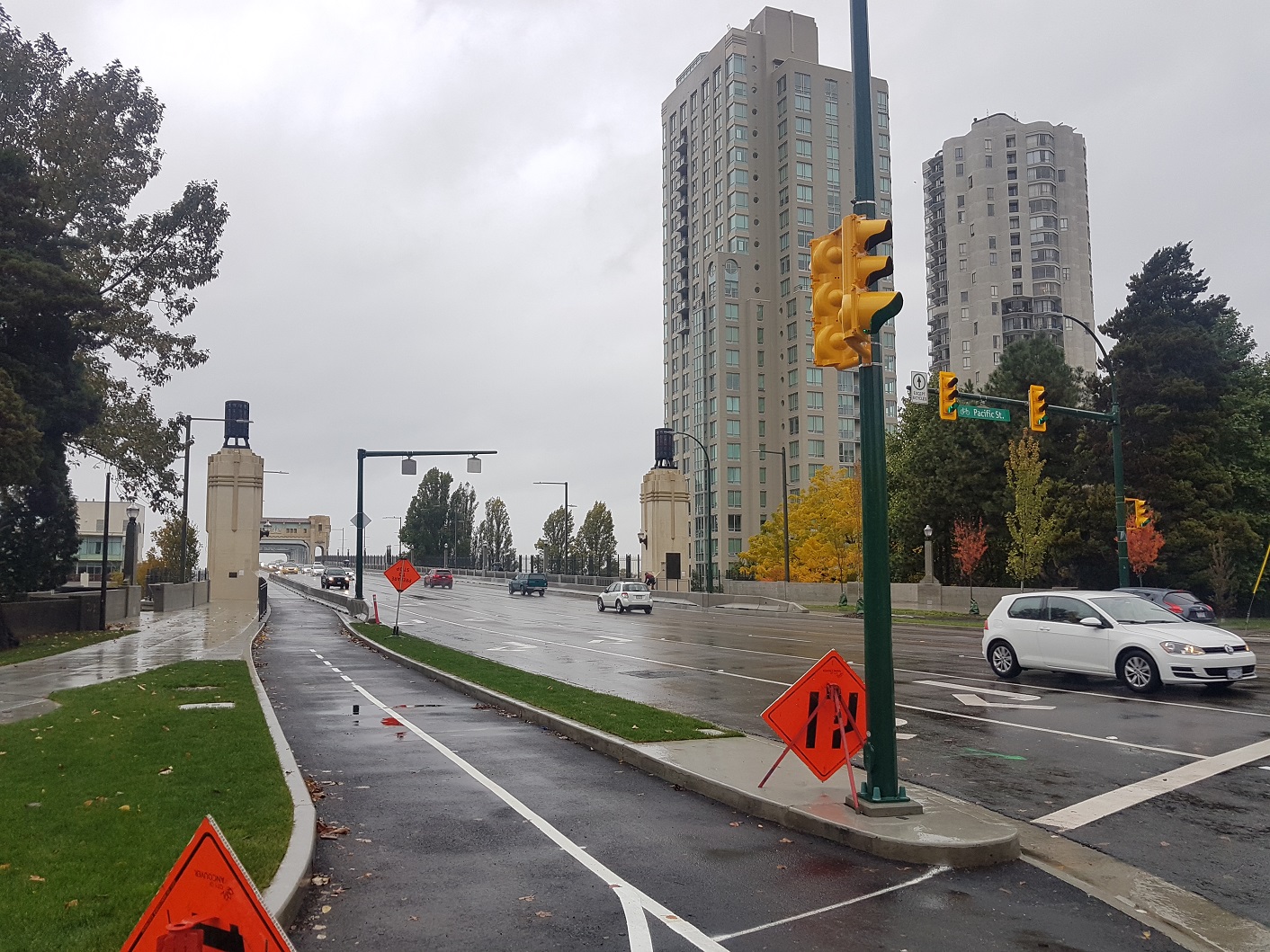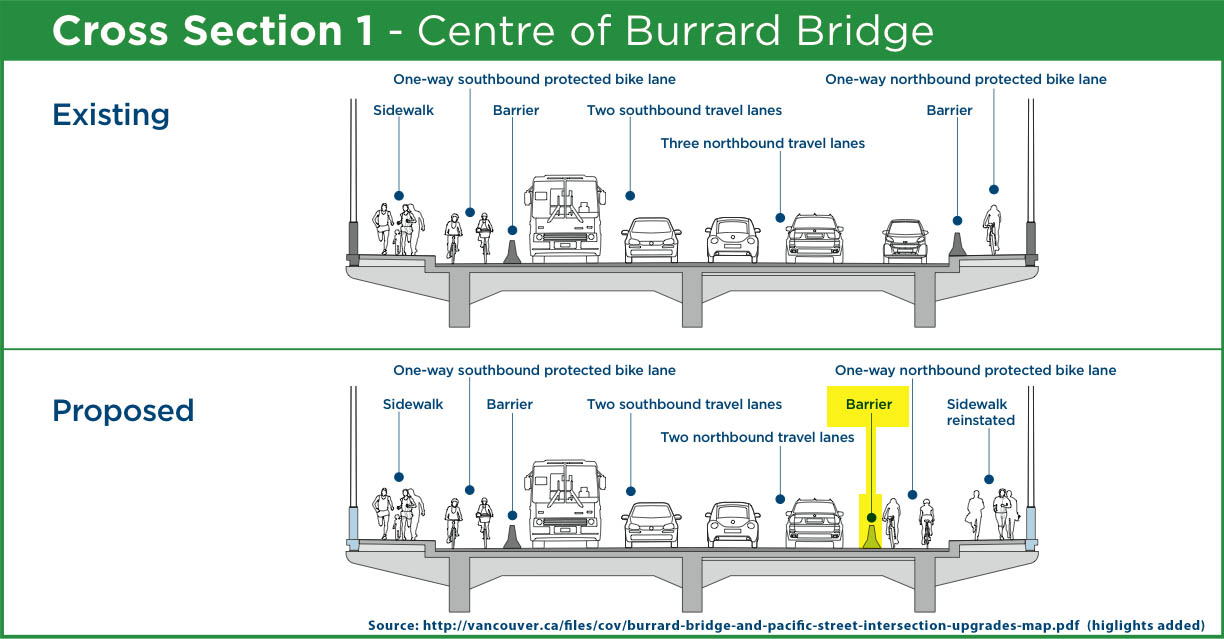Vancouver, the most populated city in British Columbia, is a Canadian leader in building and designing “all ages and abilities” cycling infrastructure. In 2017, Vancouver adopted a Complete Streets policy framework including a traffic by-law giving the City Engineer delegated authority to make street modifications to support safety and mode share targets to deliver Complete Streets. The city has seen a major modal shift towards cycling, walking and transit in recent years thanks to strong policies, integration with existing guidelines, and funded implementation plans.
A blog post highlights a Complete Streets transformation of a Vancouver bridge.



